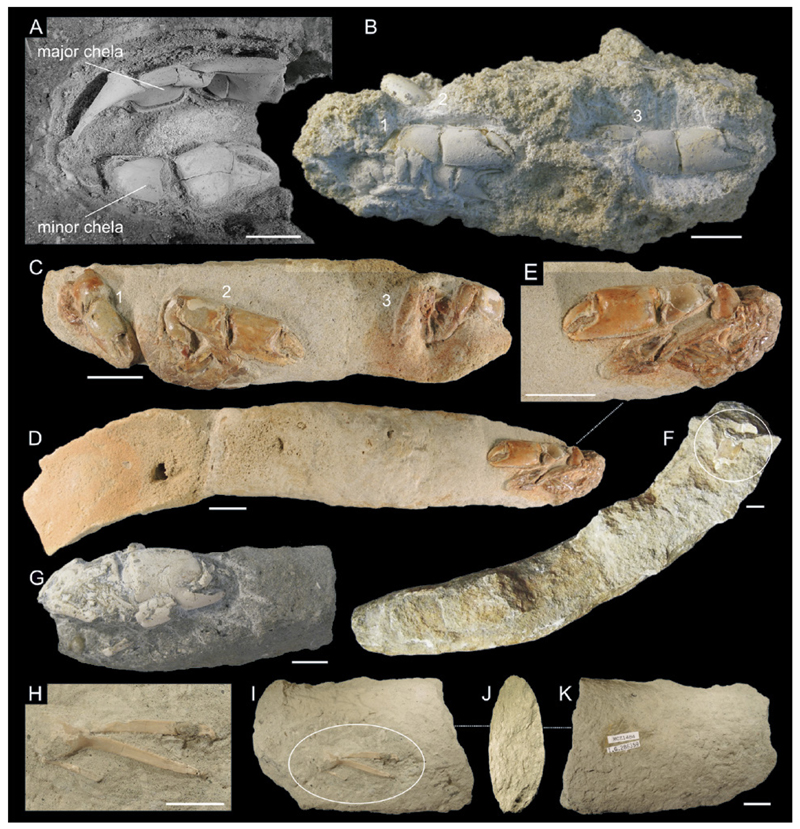Fig. 7.
Ghost shrimp body fossils preserved in burrows. A: Grynaminna grandis (Karasawa et al., 2006) from the Pleistocene of Japan in a hollow burrow (cross-sectional view) (MFM 142500). B: Eucalliax pseudorakosensis (Lőrenthey in Lőrenthey & Beurlen, 1929) from the middle Miocene of Slovakia, three individuals (moults?) in a single burrow (SNM-Z 21373). C – E: Mesostylus faujasi (Desmarest, 1822), from the Late Cretaceous (Campanian) of Germany. Three individuals (numbered) in a single burrow (C) (RE A 6075). Single individual (moult?) at the end of a burrow tunnel (D, E) (RE A 5009/03). F: Mesostylus faujasi from the Late Cretaceous of the Czech Republic, major chela (circled) in a burrow (NM-O7576). G: “Callianassa” almerai Müller, 1993 from the middle Miocene of Austria (GW RET93-021). H – K: Ctenocheles sp. from the middle Eocene of Italy (see also Beschin et al. 1998: fig. 6.1) in a large burrow (MCZ 1484) in three different views (I – K) and a closeup of the specimen (H). Specimens in A and B were coated with ammonium chloride prior to photography. A is from Hyžný & Karasawa (2012). Scale bars equal 10.0 mm.

